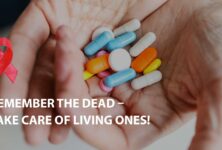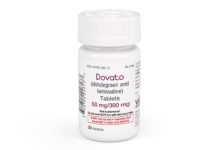Key HIV drugs added to the list of medicines critical to public health, including tenofovir for HIV prevention, and dolutegravir.
Earlier this month, the World Health Organization (WHO) updated their list of medicines deemed ‘essential’ as part of a well-functioning health system. That is, the drugs that every person should have access to, should they need it, no matter where they are.
Notable was the inclusion of pre-exposure prophylaxis (PrEP), taken as either tenofovir monotherapy, or in combination with emtricitabine or lamivudine, to prevent HIV infection. The addition supports current WHO guidelines for HIV prevention, treatment and care released at the end of 2015, which recommend PrEP for HIV-negative people who are at-risk of HIV infection. These include populations who are unable to negotiate condom use, those in a relationship with someone living with HIV, and people who do not use condoms.
Many countries have moved to include PrEP as part of their national HIV strategies. Most recently, Kenya began promoting PrEP and providing it free of charge to certain populations. They join a growing list of other countries – starting with the USA in 2012 – who have recognised the benefits of PrEP for the HIV response.
Also new to the list is the antiretroviral drug (ARV) dolutegravir, which has received some hype this year because of its efficacy and tolerability in treating people living with HIV, but also because it has a high genetic barrier to resistance. HIV drug resistance (HIVDR) has the potential to derail positive advances made in keeping people living with HIV healthy and limiting onward transmission. The inclusion of drugs known to have improved resistance profiles also support the WHO’s efforts to combat HIVDR – several reports relating to this will be released by them next month.
Other drugs making this year’s cut include new medicines to treat tuberculosis (TB), leukaemia, malaria, and hepatitis C. The list now also includes antibiotics listed in a tier-system, to address rising concerns about antimicrobial resistance. Antibiotics are categorised as ‘access’, ‘watch’, and ‘reserve’, with those in the latter list being used as only a last resort.
The WHO Essential Medicines List is updated every two years. While the list does not guarantee access to medicines, it works by helping countries to prioritise the most important medicines to make available to their populations.
The inclusion of the first ARVs to the list in 2002 is lauded as the catalyst for increasing HIV treatment access to millions of people living with HIV in low-resourced countries, leading to the formulation of the Global Fund to Fight AIDS, Tuberculosis and Malaria, as well as the President’s Emergency Plan for AIDS Relief (PEPFAR).
The WHO Expert Committee on the Selection of Essential Medicines also recommended the development of an Essential Diagnostics List (EDL), to help countries decide which evidence-based diagnostic tools they should prioritise. In the first instance, the list will focus on in-vitro diagnostics (tests using blood or tissue samples) for priority areas such as HIV, TB, malaria, and hepatitis B and hepatitis C.


 ПОИСК ПО САЙТУ
ПОИСК ПО САЙТУ  поиск по ресурсному центру
поиск по ресурсному центру 



